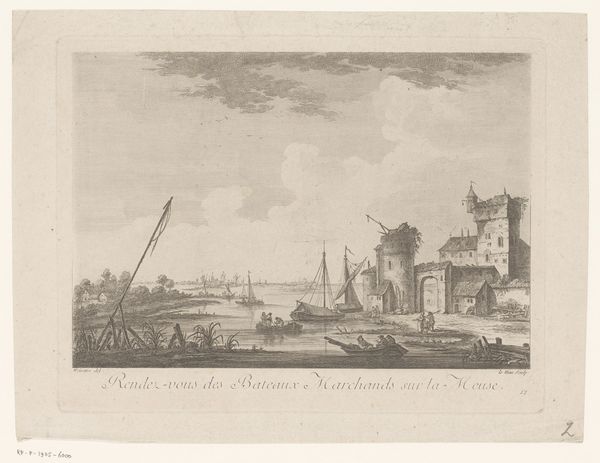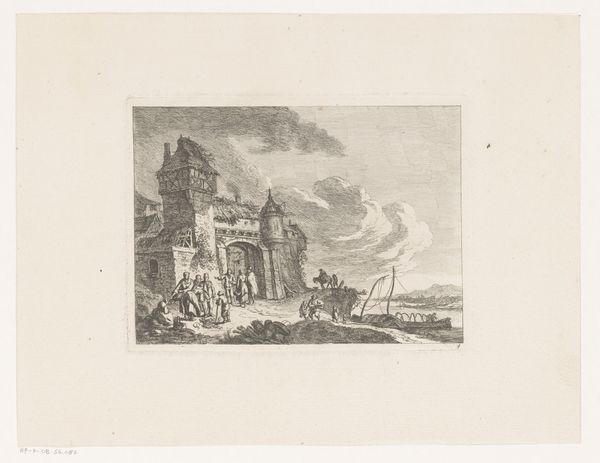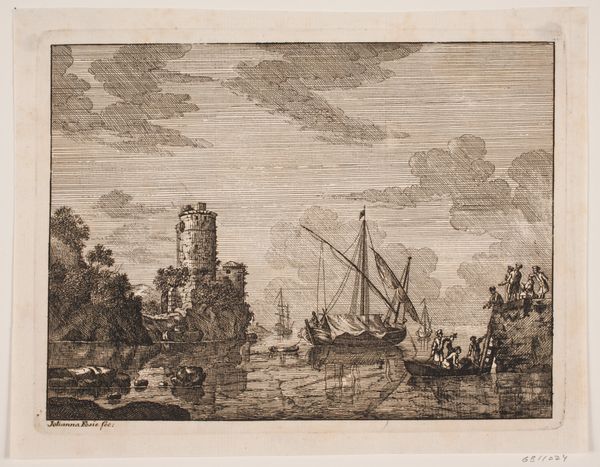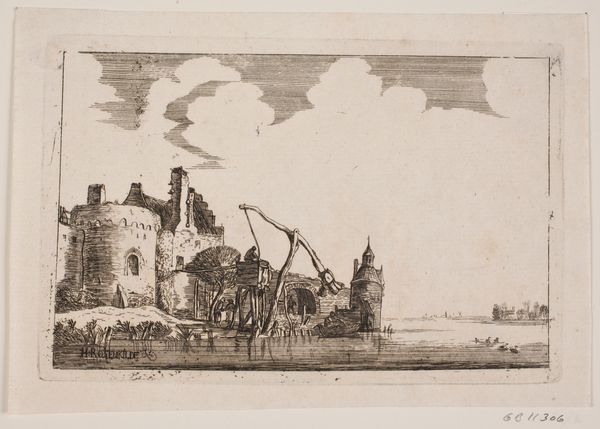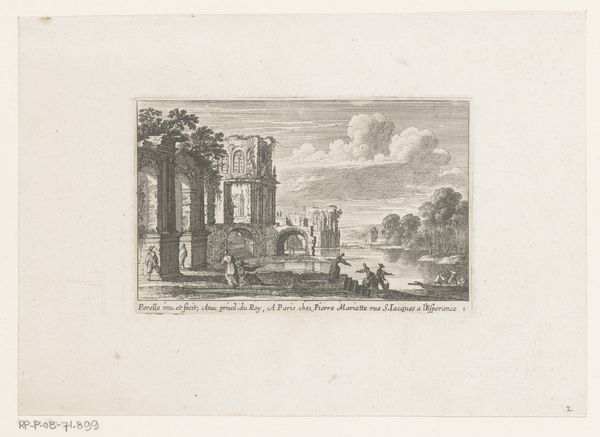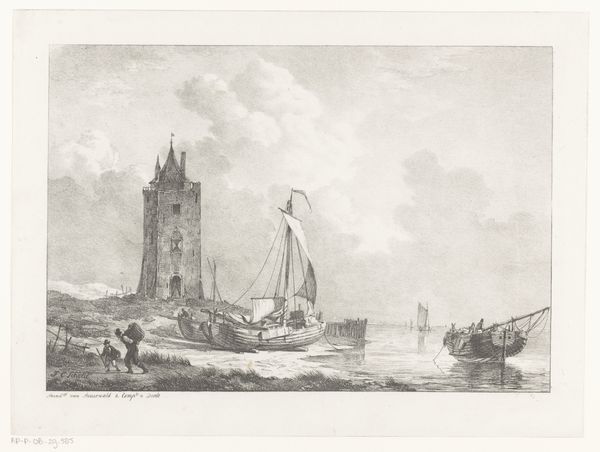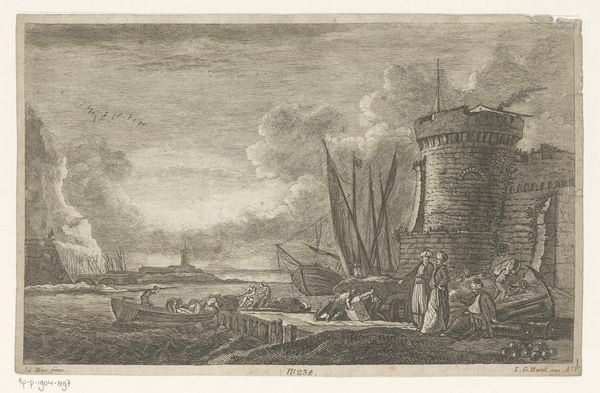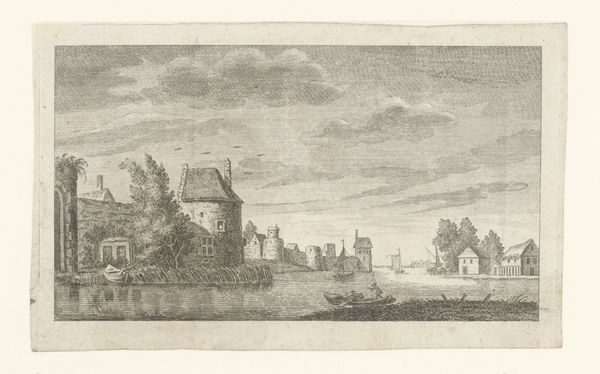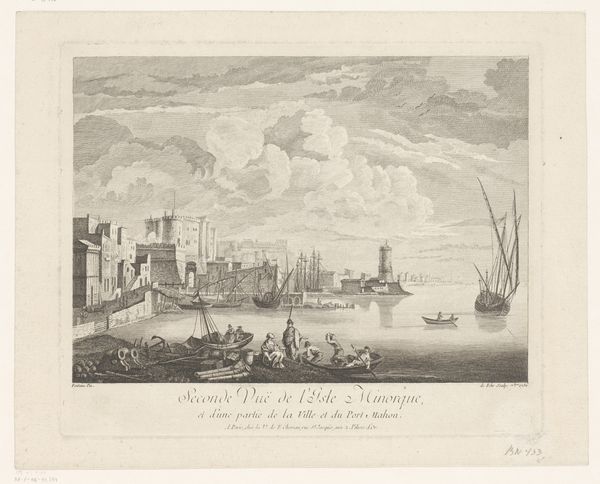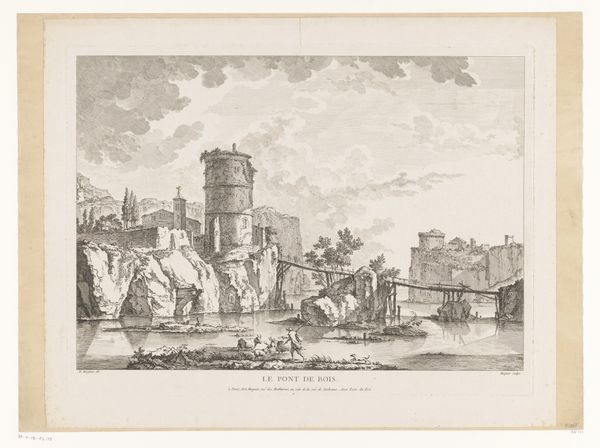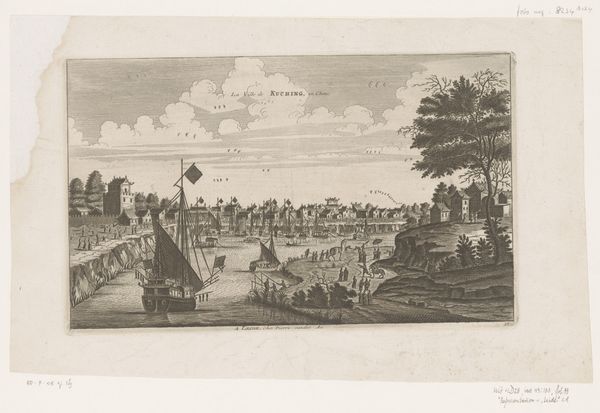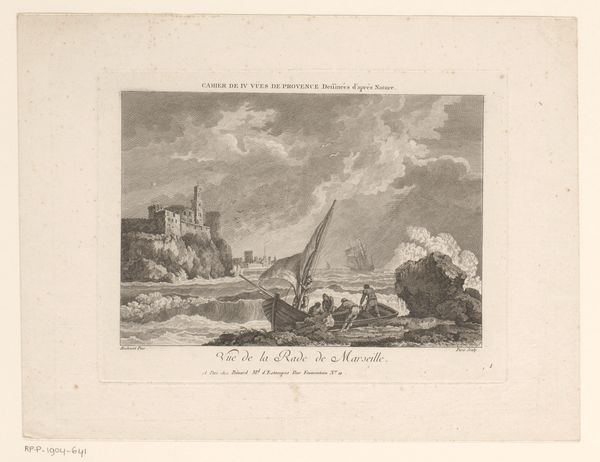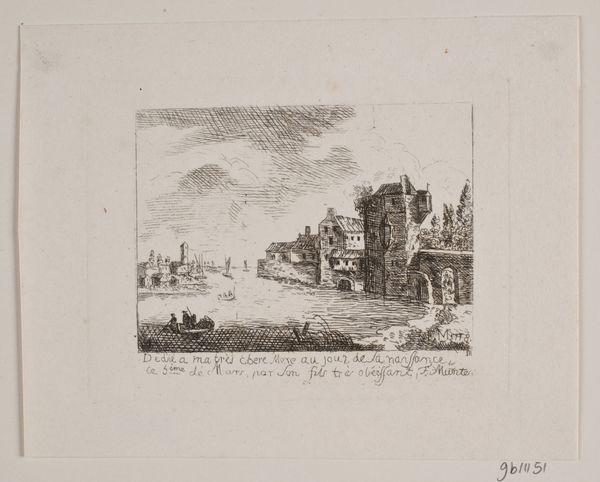
Dimensions: 153 mm (height) x 261 mm (width) (billedmaal), 174 mm (height) x 271 mm (width) (Plademål)
Curator: Andreas Flint created "Landskab" in 1789. It’s a landscape done as an etching. What are your immediate thoughts on this print? Editor: Oh, it's like stepping back in time. I can almost hear the water lapping against the stone walls. There’s a sort of romantic, melancholy air to the scene, a crumbling fortress…it’s a vibe. Curator: Indeed. The composition utilizes the body of water as a strong horizontal element, visually separating the architectural components from the sky above, achieving a striking balance. It makes for an interesting interplay of light and shadow across the various structures and foliage. The artist is a true observer of light here. Editor: I see what you mean about the light. But to me, it's about decay, too. Notice the ruined turret overtaken by greenery? There’s this sense of nature reclaiming what’s been built. Almost bittersweet. Curator: A pertinent point, it highlights a theme within Baroque landscape prints to show the transient nature of human achievements compared to the eternal power of nature. I wonder, did you note the detailed work of the people on boats or the way Andreas Flint structured the skyline? Editor: They're almost hidden. You almost have to hunt around to realize there’s a cityscape in the background beyond the big castle-thing up front. All those little boats! It makes you wonder about all the activity along the waterways during this period. I wonder what stories they carry? Curator: I am compelled to suggest it shows Flint’s mastery of etching; note how the fine lines create textures and forms. Semiotically, the juxtaposition of the ruins and the active waterway generates an eloquent narrative around the passage of time. Editor: It makes you want to slow down, appreciate these quiet scenes of everyday life. A kind of invitation into the artist’s moment. Curator: A quite insightful interpretation. Flint encourages, in essence, a dialogue between then and now by capturing a moment framed by its location. Editor: True. Well, it’s more than just technique and timeframe, it’s that quiet story humming underneath. That whisper of impermanence makes it special, I think. Curator: Very eloquently said. I hadn’t looked at it from such a touching angle previously.
Comments
No comments
Be the first to comment and join the conversation on the ultimate creative platform.
